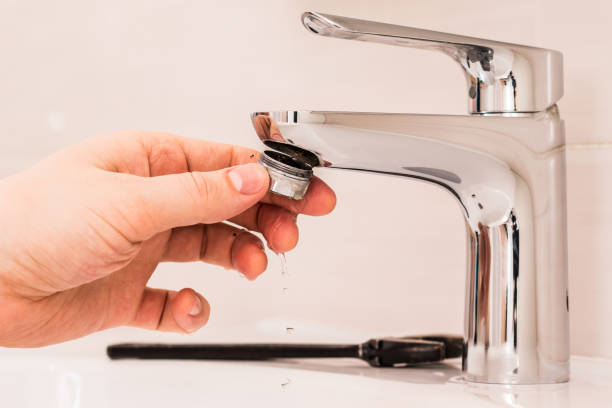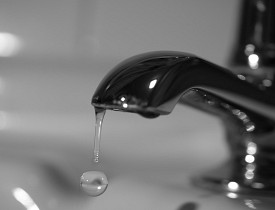Learning the Value of Repairing a Dripping Faucet
Learning the Value of Repairing a Dripping Faucet
Blog Article
Listed here in the next paragraphs you might get additional amazing insight in relation to Why Is It Important To Fix Your Leaking Tap/Faucet?.

Trickling faucets might appear like a small aggravation, but their impact goes beyond just the inconvenience of the noise. From drainage to incurring unnecessary economic costs and health risks, ignoring a dripping tap can cause different repercussions. In this short article, we'll delve into why it's essential to address this usual family problem quickly and effectively.
Wastefulness of Water
Ecological Impact
Trickling taps add considerably to water wastage. According to the Epa (EPA), a single tap leaking at one drip per secondly can squander greater than 3,000 gallons of water annually. This not just stress water sources however additionally impacts ecosystems and wild animals based on them.
Step-by-Step Overview to Fixing a Dripping Tap
Devices Required
Prior to trying to fix a leaking tap, gather the required devices, consisting of an adjustable wrench, screwdrivers, substitute components (such as washing machines or cartridges), and plumber's tape.
Common Faucet Issues and Their Solutions
Determine the kind of tap and the details concern causing the drip. Common problems include worn-out washers, corroded shutoff seats, or damaged O-rings. Describe supplier guidelines or online tutorials for detailed advice on fixings.
Financial Prices
Raised Water Costs
Past the environmental impact, dripping taps can blow up water expenses substantially. The collected waste over time converts right into higher energy costs, which could have been avoided with prompt repair work.
Possible Property Damages
Furthermore, long term leaking can lead to harm to fixtures and surface areas surrounding the tap. Water accumulation can trigger staining, rust, and also structural problems if left neglected, resulting in additional repair work expenses.
Health Issues
Mold And Mildew and Mildew Growth
The continuous existence of moisture from a trickling faucet produces an excellent setting for mold and mildew and mildew development. These fungis not only jeopardize interior air top quality but also position health and wellness threats, specifically for people with respiratory conditions or allergies.
Waterborne Diseases
Stagnant water in dripping taps can become a breeding ground for bacteria and various other virus, enhancing the danger of waterborne diseases. Contaminants such as Legionella microorganisms grow in stationary water, potentially leading to significant health problems when ingested or inhaled.
Do it yourself vs. Expert Repair work
Advantages and disadvantages of DIY Repair Service
While some may try to deal with a leaking tap themselves, DIY repairs include their own set of obstacles. Without appropriate expertise and tools, do it yourself attempts can worsen the issue or cause incomplete repair services, prolonging the problem.
Advantages of Working With a Professional Plumber
Employing a specialist plumber guarantees that the underlying root cause of the trickling tap is addressed efficiently. Plumbing professionals possess the proficiency and equipment to detect and repair faucet issues effectively, conserving time and reducing the threat of further damages.
Ecological Responsibility
Individual Contribution to Conservation
Taking duty for dealing with dripping faucets aligns with more comprehensive initiatives toward water conservation and environmental sustainability. Every person's activities collectively make a significant influence on protecting valuable resources.
Lasting Living Practices
By prioritizing prompt fixings and embracing water-saving habits, individuals add to sustainable living techniques that benefit both existing and future generations.
Preventive Measures
Normal Maintenance Tips
To stop leaking taps, carry out regular maintenance such as cleaning up aerators, inspecting for leaks, and changing worn-out parts quickly. In addition, consider setting up water-saving devices or upgrading to much more efficient fixtures.
Importance of Prompt Repair Works
Dealing with dripping taps as quickly as they're discovered avoids more water wastefulness and prospective damage, inevitably saving both water and cash in the long run.
Impact on Building Worth
Assumption of Well-Maintained Property
Maintaining a home in good condition, including dealing with maintenance concerns like trickling faucets, enhances its viewed value and desirability amongst prospective purchasers or tenants.
Impact on Resale Value
Residences with well-maintained plumbing components, including taps, command greater resale values in the property market. Dealing with trickling faucets can add to a positive impact during property assessments and negotiations.
Final thought
Addressing a leaking tap goes beyond simple convenience; it's a vital action toward saving water, reducing monetary expenses, and guarding health and residential property. Whether via do it yourself repairs or expert help, doing something about it to deal with dripping faucets is a small yet impactful way to promote responsible stewardship of resources and contribute to a healthier, much more sustainable future.
How to Fix a Dripping or Leaky Faucet
A leaking faucet is one of the most common problems that homeowners encounter, but it being commonplace doesn’t make it any less annoying. The constant drip drip drip of a leaking bathtub faucet, showerhead, or sink tap can disturb your home’s serenity. Left neglected, a dripping faucet can also result in higher water bills and discoloration or mold growth in your sink or plumbing fixtures.
Fortunately, you don’t have to be a trained plumber to know how to stop a dripping faucet. With some basic tools, replacement parts, and a little patience, leaky faucet repair is a breeze. In this article, we’ll explain what causes dripping faucets and how you can fix them.
What Causes a Leaking Faucet?
Kitchen and bathroom faucets come in all manner of designs, but most involve some combination of valves, O-rings, seals, and washers. The O-ring is usually the weakest link, but any one of these pieces can wear down over time. Heat, moisture, temperature fluctuations, minerals, mold, and movement can contribute to warping and corrosion, breaking the watertight seal. This just comes with the territory of being a homeowner. Everything is always subject to wear and tear, and some component parts of your appliances and fixtures need to be replaced on occasion. At least replacement O-rings are cheap!
More rarely, dripping faucets can be a symptom of excessively high water pressure. Were this the case in your home, you would probably notice that the leak is not isolated to one faucet. Water pressure issues are harder to resolve on your own. We recommend contacting a professional plumber if you suspect your water pressure is too high.
How to Fix a Dripping Faucet
Pipe wrench or monkey wrench Allen wrench set Screwdrivers Old towel or rag Shut off the water.
Before you do anything, you need to turn off the water to keep from drenching your kitchen or bathroom. You should find a valve under the sink and against the wall. Once you’ve turned this valve, try turning the faucet on to confirm that the water source has been cut off.
If you can’t locate your local valve for the faucet you’re working on, you can always shut off the water to the house at the main valve. Of course, this will prohibit anyone from using the sinks, showers, or toilets while you’re working on the faucet that’s giving you trouble.
Plug or block the drain.
You’ll be disassembling the faucet and removing some small bits of hardware. Plug the drain with a stopper or rag to avoid the possibility of a small screw falling into your P-trap.
Take apart the faucet assembly.
There are several varieties of kitchen and bathroom faucets, each with its own manner of assembly. For detailed instructions on how to disassemble your faucet, you can refer to the fixture’s manual or contact the manufacturer. If you know whether you have a ball, disc, cartridge, or compression faucet, you can find detailed schematics online.
In general, you need to begin by removing the faucet handles. You might notice a small screw that you’ll need to remove with a screwdriver or Allen wrench. If you don’t see any visible securing hardware, it’s likely hidden under a decorative cap that can be unscrewed or popped off with flathead screwdriver.
Remove each piece methodically, consulting a schematic when necessary. Take notes or arrange the pieces in such a way to make it easier to correctly reassemble the faucet later.
Remove the cartridge.
Once you’ve removed the handles and securing hardware, you should be able to remove the valve cartridge or stem. Some cartridges will slide right out. Other faucet models will require you to loosen a nut with a pipe wrench before you can remove the valve stem.
Examine the exposed hardware.
With the cartridge or stem removed, inspect the component parts. Check the rubber O-rings for wear and tear. Also examine the seat washer for corrosion or other damage. These pieces are usually the responsible parties for a dripping faucet, but it’s worth inspecting the other component parts while you have the faucet disassembled.
Find replacement parts.
Once you’ve identified which faucet component has failed, find an identical replacement. Your local hardware store should have O-rings, seat washers, and other standard components in stock. If you have a luxury or uncommon faucet, you may have to contact the manufacturer for a replacement part.
It’s a good idea to take your old parts with you to the hardware store so you can compare them with the store’s inventory and be sure you’re purchasing the correct replacement.
Reassemble the faucet.
With your new parts in hand, reconstruct the faucet and handles. Don’t be tempted to overtighten screws or nuts. You might think this could create a better seal, but it can instead damage or bend a delicate part of the assembly and create a new problem for you.
Turn on the water and test the faucet.
The only thing left to do is test your work. Unplug the sink, turn the water back on, and try the faucet. Congratulate yourself on a job well done!
https://www.libertyhomeguard.com/how-to-fix-a-dripping-or-leaky-faucet/

As an avid reader on Why Are My Faucets Dripping (And Can I Fix It Myself)?, I figured sharing that piece of content was smart. In case you liked our article please don't forget to pass it around. I take joy in reading our article about Should I Repair or Replace a Leaky Faucet?.
Report this page